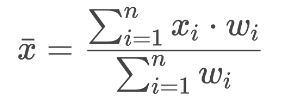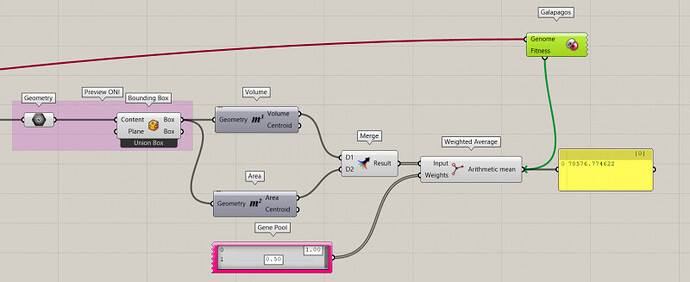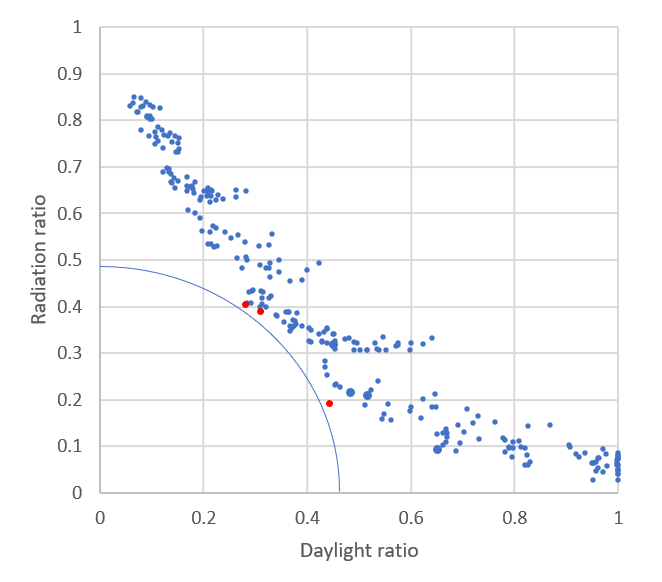Hi to all,
I have been for a while already different approaches for optimizing exterior fix shading systems. I believe this is one of the most discussed topics and probably the most challenging due to the number of parameters and variables that are involved in this decision.
I have tested Octopus in the past for multiobjective optimization and Colibri along with Design Explorer, I think all these are very powerful tools. However, these are very time consuming approaches and I was wondering if there are any simplistic approach that can be summarize in one single objective that can be use as a fitness in Galapagos.
So far, I have seen different ways to do this, but I am a bit confused about which one is more appropriate for my case.
In my case, I have an office space with southwest orientation located near Dublin and I want to reduce/minimized the harmful radiation during the summer (i.e. when Tout > 16C) and maximise the daylight access. For this, I have the cumulative incident radiation in the windows during the harmful radiation hours for a scenario with and without shades so that I can normalize both daylight and radiation. My indicator for daylight is a normalized DA average for a series of points at 6m distance from the windows against a scenario with no shades.
Based on this, I have two normalized “ratios” (between 0-1) that show how much my shades minimize daylight and radiation against a no shading scenario. I know that If I divide my radiation ratio by my daylight ratio I can obtain the optimal solution in terms of minimum radiation maximum daylight if I look for the minimum result, however, this solution does consider equally important daylight and radiation. I want to give priority to daylight, since it is more important to obtain an acceptable daylight level than reducing solar gains in this situation.
I have tested some ways to do this, but the results just doesn’t make much of a sense and I was wondering if anybody have carryout some similar studies successfully where you need to prioritize one variable more than the other.
Here are some examples:
-Average weighted method

-Pareto front distance from origin
-Quadratic functions

They report different results, and I am confused whether I should use one or the other. Any insight is very much appreciated.
Single objective optimization test.gh (101.0 KB)


